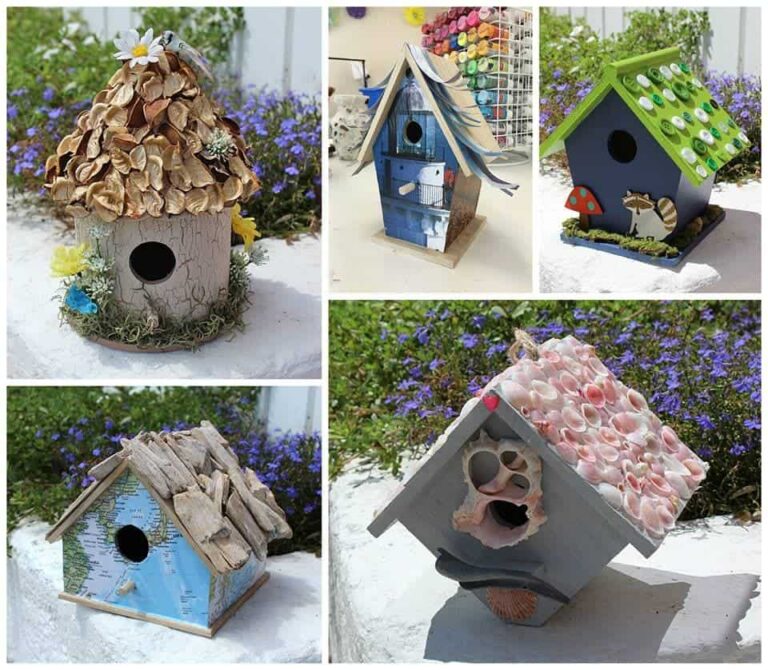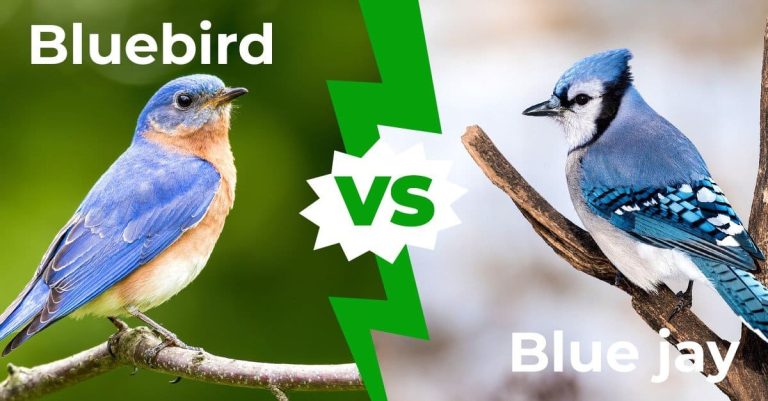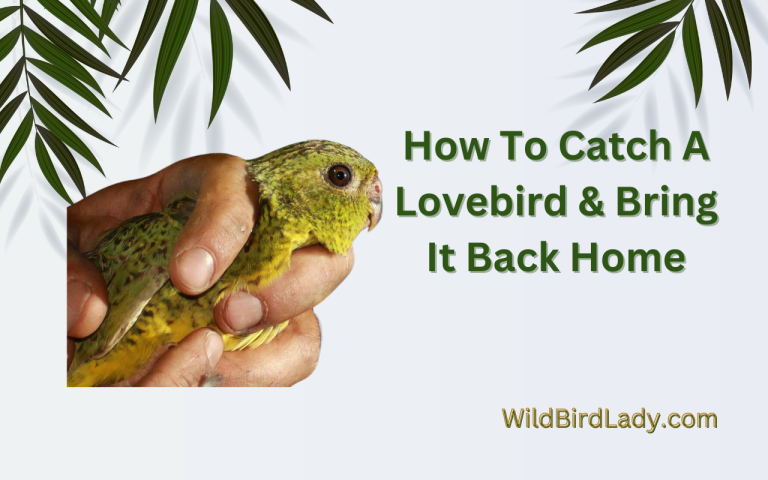Kick Out Blue Jays: Your Ultimate Guide to Get Rid of Them
To get rid of blue jays, use bird feeders that are specifically designed to prevent them from feeding. Alternatively, use bird repellent devices or simply remove any food sources that may attract them.
Blue jays can be a beautiful addition to your backyard, but they can also be a nuisance. If they are causing problems, such as damaging your garden or taking over bird feeders, it may be necessary to take action. There are several ways to deter blue jays from your property, including using specially designed bird feeders that prevent them from accessing the food, using bird repellent devices or simply removing any food sources that may be attracting them.
In this article, we’ll explore some of the most effective methods for getting rid of blue jays and restoring peace to your backyard.
Kick Out Blue Jays: Your Ultimate Guide To Get Rid Of Them
Kick out blue jays: your ultimate guide to get rid of them
Blue jays definitely have their good side – they are playful, entertaining and intelligent birds. However, if they start wandering around your property, they can be a nuisance. These birds have a tendency to steal food from other birds’ nests, attack smaller birds and even damage crops.
In this regard, it’s important to learn how to get rid of blue jays effectively and humanely.
Understanding The Reasons Why Blue Jays Invade Your Garden
Blue jays, especially those that are non-migratory, are territorial birds. They usually search for their own territory to establish a nesting site where they can easily find food and mates. Some common reasons blue jays may invade your garden include:
- Searching for food: Blue jays enjoy eating insects, nuts, and fruits. They might invade your garden in search of these food sources.
- Territorial behavior: If they perceive your property as their territory, they may decide to take up residence and build a nest.
- Attracted to water sources: Bird baths, fountains, and other water sources can attract blue jays to your property.
- Abundant resources: Bird feeders, compost piles and gardens full of fruits and vegetables can attract blue jays.
The Importance Of Humane Ways Of Getting Rid Of Blue Jays
Getting rid of blue jays isn’t just about protecting your garden and property. As humans, we have a responsibility to ensure that our methods for pest control are humane. Here are some reasons to prioritize humane methods for getting rid of blue jays:
- Respect for nature: All creatures deserve respect no matter how small or insignificant they may seem to us.
- Safety for humans: Inhumane methods may put humans in danger, such as using poisonous substances that could potentially harm humans.
- Environmental considerations: Inhumane methods can leave harmful chemicals in the environment, causing long-lasting, hazardous effects.
It’s essential to understand why blue jays invade your garden in the first place. Once you have identified the reason behind their arrival, you can choose the most appropriate humane method to get rid of them. Remember, always prioritize the safety and well-being of the birds, yourself, and the environment.
Identify The Signs Of Blue Jay Infestation
Understanding The Signs Of Blue Jay Infestation
Blue jays are beautiful birds with striking blue feathers. They are known for their aggressive behavior and loud calls. Blue jays are omnivorous and can eat fruits, insects, and small animals. While they can be enjoyable to watch, having a blue jay infestation in your garden can be problematic.
Here are the signs to look for:
- Loud and aggressive calls of blue jays
- Large flocks of blue jays in your garden
- Twigs, leaves, and other debris from your garden in their nests
- Damage to garden plants and trees due to blue jay feeding
Identifying The Areas Of Your Garden That Are Most Vulnerable To Blue Jay Invasion
It’s important to identify areas in your garden that are most vulnerable to blue jay invasion. Here are a few areas to take note of:
- Fruit trees and berry bushes: Blue jays love to eat fruits and berries from these types of trees and bushes.
- Birdfeeders: Since blue jays are omnivorous, they can eat birdseed as well. Therefore, bird feeders are a common area where they can be seen.
- Gardens with open ground: Blue jays can dig up seeds and small bulbs from gardens with open ground. Make sure to protect your garden properly.
The Importance Of Early Detection Of Blue Jay Infestation
Early detection is vital in dealing with blue jay infestations. Here are some reasons:
- Blue jays can be a sign of a bigger pest problem: If you notice a large flock of blue jays, it could be a sign of a more significant pest problem in your garden.
- Blue jays can cause damage: Blue jays can cause significant damage to your garden if not dealt with early. Don’t let them cause expensive damage.
- Early detection means less harm to blue jays: Avoiding harsh methods to get rid of blue jays is possible when early detection takes place.
Natural Ways Of Getting Rid Of Blue Jays
Blue jays are quite fascinating to watch, but they can cause damage to your gardens and disturb other birds. Fortunately, there are natural ways to get rid of them without harming them. Here are some effective tips to manage blue jays without using harmful chemicals or hurting them.
Using Noise Or Audio Repellents To Get Rid Of Blue Jays
Blue jays dislike high-pitched and loud noises, making them an excellent weapon against them. Here’s how:
- Play loud music or use ultrasonic devices: If you have a garden or lawn, you can play loud music or use ultrasonic devices, both of which can irritate blue jays and keep them from coming back.
- Use bird alarm calls or predator sounds: You can also play bird alarm calls or predator sounds, which can trick blue jays into thinking a predator is nearby, causing them to fly away. These sounds can be found online or from any garden supply store.
Making Use Of Decoys To Distract Blue Jays
Another useful way of diverting blue jays involves using decoys. Here’s how:
- Place bird of prey decoys in your yard: Place bird of prey decoys in your yard, especially near your garden or bird feeders, to deter blue jays from coming near. Blue jays fear predators, and these decoys will keep them on their toes.
- Use reflective tape or shiny objects: Blue jays are attracted to shiny objects, so you can hang reflective tapes or shiny objects like cds nearby your garden. This will distract them from coming towards your plants.
Installing Bird Netting Around Your Garden To Keep Blue Jays Out
Installing bird netting can be a long-term solution for keeping blue jays out of your garden. Here’s how:
- Cover your plants with bird netting: Bird netting is a mesh net that prevents birds, like blue jays, from entering your garden, but allows other birds to enter. Once you’ve covered your plants with bird netting, blue jays will not be able to reach them.
- Install poles for the bird netting: You will need to install poles around your garden to support the bird netting. Secure the bird netting to the poles so that it doesn’t move with the wind.
To sum up, these natural ways can help you manage blue jays without harming them or using harsh chemicals in your garden. Try these tips to create a pleasant environment for both your garden and fellow birds.
Chemical Methods Of Getting Rid Of Blue Jays
Blue jays are notoriously bold and aggressive birds that are often unwelcome guests in gardens and yards. If you’re dealing with a blue jay infestation, chemical methods of bird control can be an effective solution. However, it’s important to understand the risks involved in using chemicals to deter these birds.
Understanding Chemical Methods Of Getting Rid Of Blue Jays
When it comes to bird control, chemical methods typically involve using chemical repellents or avicides. Chemical repellents work by creating an unpleasant taste or odor to birds, while avicides are designed to kill birds outright.
Some common chemical bird control products include:
- Methyl anthranilate: A non-toxic chemical that irritates the birds’ senses, making them want to leave the area.
- Capsaicin: A pepper extract that causes a burning sensation in birds’ mouths and can deter them from eating food in the area.
- Avitrol: A toxic avicide that is designed to target specific bird species, including blue jays.
The Precautions And Safety Measures To Take When Using Chemical Methods
While chemical methods can be effective, they can also pose a risk to humans, pets, and other wildlife. When using chemical bird control products, it’s essential to take the necessary precautions to ensure safety. Here are some guidelines to follow:
- Always read and follow the instructions on the label carefully.
- Wear appropriate personal protective equipment, such as gloves and a face mask.
- Keep children and pets away from the treated area.
- Dispose of any leftover chemicals and containers according to local regulations.
- In case of accidental exposure, seek medical attention immediately.
The Importance Of Consulting A Professional Before Using Chemical Methods
While chemical bird control products can be useful in certain situations, they should only be used as a last resort. Consulting a professional wildlife control specialist can help you determine the most effective and safe method of dealing with a blue jay infestation.
A professional can:
- Conduct a thorough evaluation of your property and identify the source of the problem.
- Recommend eco-friendly methods of bird control, such as netting or scare devices, before resorting to chemical repellents or avicides.
- Ensure that any chemical products used are applied correctly and safely.
When it comes to getting rid of blue jays, chemical methods can be an effective option. However, it’s essential to take the necessary precautions to ensure the safety of humans, pets, and other wildlife. Before using any chemical products, it’s always best to consult a professional wildlife control specialist to determine the best course of action.
Frequently Asked Questions For How To Get Rid Of Blue Jays
How Do I Prevent Blue Jays From Nesting In My Backyard?
To prevent blue jays from nesting in your backyard, you can try removing tall trees, covering bushes with nets, using bird deterrents, and trimming back branches that provide cover for the birds.
What Foods Should I Avoid Feeding Blue Jays?
You should avoid feeding blue jays peanuts, as they can lead to the development of a harmful mold, and bread or other types of uncooked dough, which can expand in a bird’s stomach and cause serious health problems.
What Natural Repellents Can I Use To Keep Blue Jays Away?
Natural repellents to keep blue jays away include growing plants with a strong scent, such as mint or lavender, laying out mothballs or coffee grounds, and hanging windchimes or reflective objects that scare the birds away.
Will Blue Jays Attack Humans Or Pets?
Blue jays are unlikely to attack humans or pets unless they feel threatened or provoked. However, if they have built their nest nearby, they may become more territorial and behave aggressively to protect their young.
Is It Legal To Kill Blue Jays In My Area?
In many areas, it is illegal to kill blue jays or any other native bird species. Instead, you can try humane methods to deter the birds, such as using non-lethal bird deterrents or modifying your backyard to make it less attractive to blue jays.
Conclusion
Blue jays can be quite bothersome to have around your home or garden. By following the methods and tips outlined in this post, you should be able to successfully deter these birds from causing any more damage or disruption. Remember to start by understanding their behavior, use humane methods of deterrents, and maintain your efforts over time.
It’s important to remember that these are wild animals, and their presence is actually beneficial for the environment. However, there are ways to manage their behavior without resorting to harmful or drastic means. By implementing some of the strategies presented here and adapting them to your specific situation, you can coexist with these beautiful birds in a peaceful and safe manner.
With persistence and patience, you can successfully get rid of blue jays while still respecting their existence in our world.








